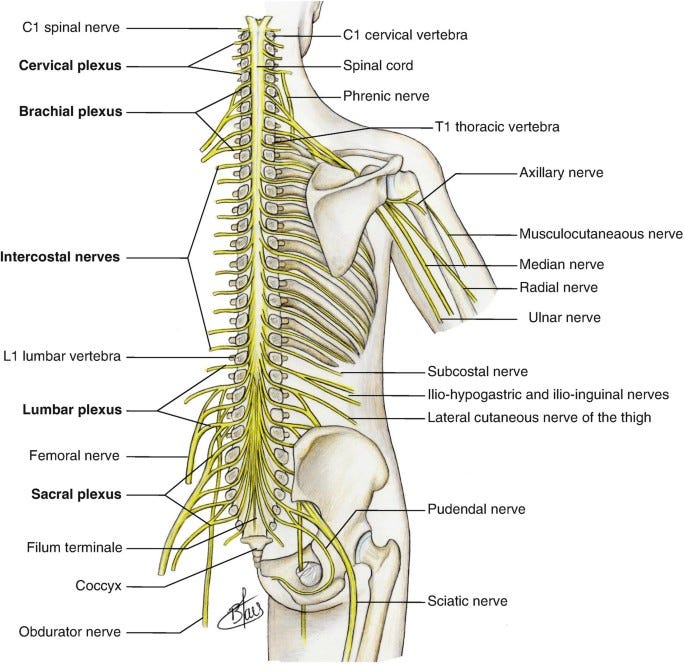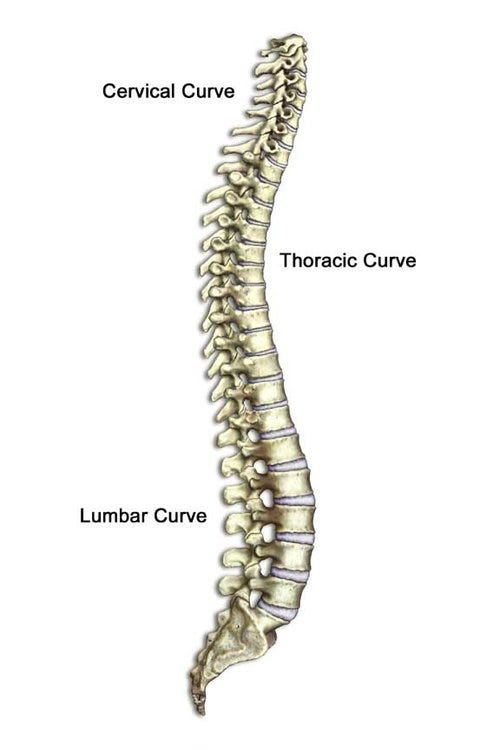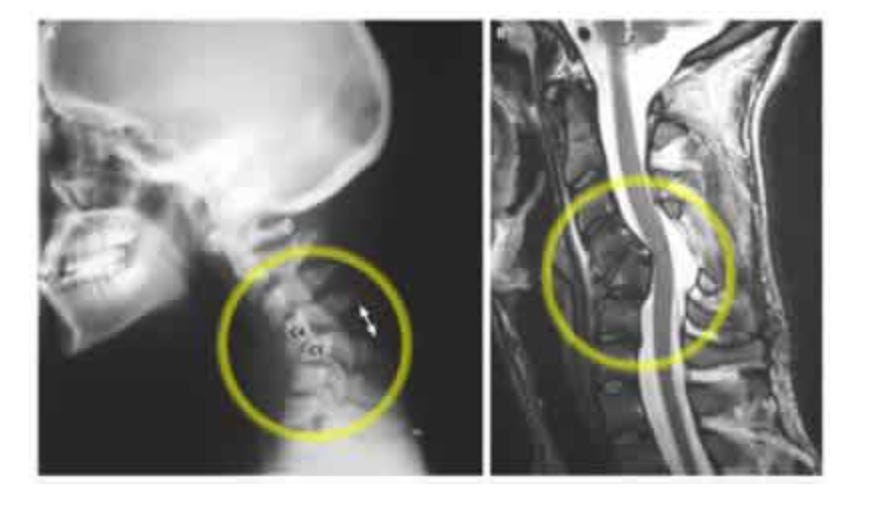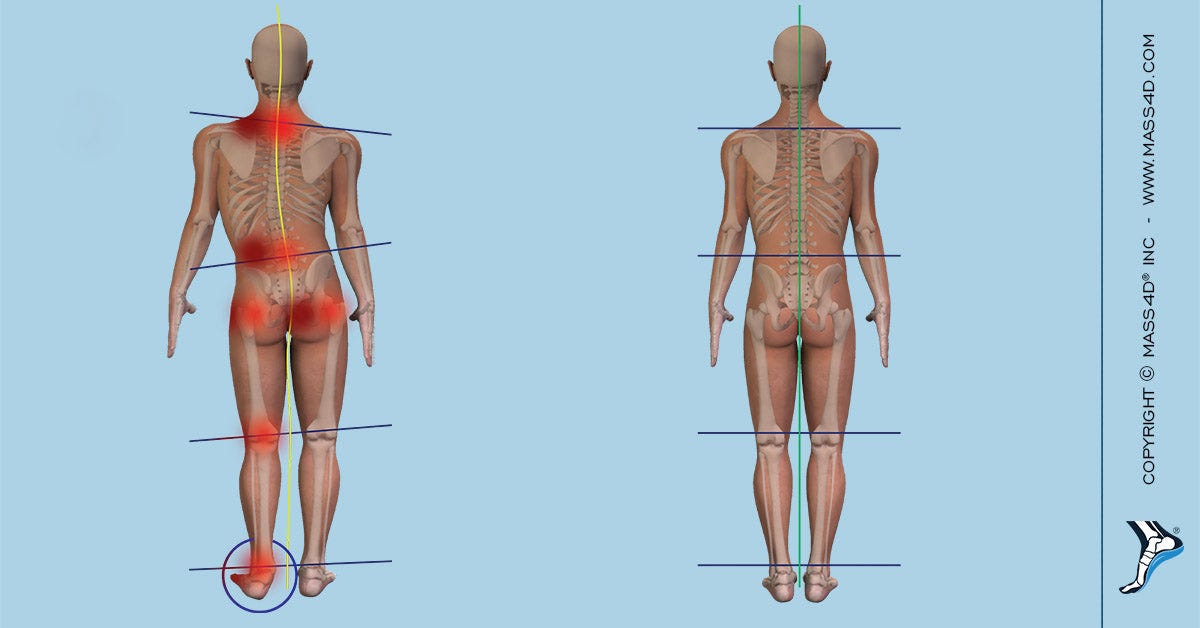Introduction
It’s really easy to be skeptical of chiropractors. The founder of chiropractic, D. D. Palmer, claimed that all diseases come from disorders of the spine, and can be fixed by fixing the spine. His son and intellectual heir, B.J. Palmer, went further and claimed that all diseases come from disorders of the upper spine, and can be diagnosed by measuring temperature changes in the spinal column using a handheld “neurocalometer”, which he made his followers lease for exorbitant prices.
These ideas are obviously ridiculous. Even worse, they still have adherents today, so called “straight” chiropractors (as opposed to “mixer” chiropractors, who mix traditional chiropractic with other ideas and disciplines). It’s entirely possible that if you go to your local chiropractor tomorrow, he will pull out a neurocalometer or its successor, the Nervo-Scope. For a personal example, I live 5 minutes away from Mass General Hospital, one of the best hospitals in the world, and there’s a chiropractor across the street from me who claims he can cure ADHD in children with spinal manipulations.
For a long time, my thought process about chiropractic ended with my knowledge of the above. Then, as I got older, I started becoming more interested in it again. I became more familiar with the ways in which traditional medicine failed, especially in chronic musculoskeletal issues (like my own lower back pain). And, as I looked more deeply into chiropractic, I found myself becoming increasingly impressed by its successes. I found dozens of Youtube videos of chiropractors having remarkable success curing tricky musculoskeletal ailments.
Now, I’m aware that those videos can be faked. It is the Internet, after all. However, what couldn’t be faked was the process the chiropractors used to diagnose and treat their patients. They had surprisingly systematic methods of diagnosis (including radiography) and followed a logical treatment plan based on those diagnoses. Even if the videos were faked (and I don’t think they were), the logic behind how the chiropractors thought seemed very real.

After watching way too many Youtube videos, then, I decided to finally approach chiropractic in my own systematic way. I knew I wouldn’t be able to learn everything chiropractors learn without doing some hands-on work, and that wasn’t what I was interested in, anyways. I was much more interested in what chiropractors thought of as the foundation for why and how their treatments were designed. And, more importantly, I wanted to be able to establish which parts of chiropractic should be taken into the mainstream.
So, here’s my attempt at establishing those parts. I think there are 3 claims of chiropractic that can be taken seriously and should be adopted into mainstream medicine. I’ve listed them here from easiest to most difficult to defend. As you might expect, I’ll try to defend each of them.
The chiropractic claims that can be steelmanned
1. There are spinal disorders that can be permanently fixed only with directly and physically manipulating the vertebrae. These manifest through pain, neuropathy, and limited mobility involving the spine.
2. There are musculoskeletal disorders that are, in fact, spinal disorders, and part of the treatment of these should be directly and physically manipulating the vertebrae. These manifest through pain, neuropathy, and limited mobility involving parts of the body that have no obvious connection to the spine.
3. There are some scattered somatic disorders that are in fact, partially spinal disorders, and part of the treatment of these should be directly and physically manipulating the vertebrae. These can manifest in ways that are not obviously connected to the spine at all, like dizziness or indigestion.
Claim 1: there are spinal disorders that can be permanently fixed only with directly manipulating the vertebrae.
Before I get into claim 1, it would probably be useful to explain how modern/mixer/non-insane chiropractors think about the spine.
Chiropractors see the spine as a chain of vertebrae that go directly down the center of the back. These vertebrae are separated by cushiony discs that prevent them from directly impacting each other. The vertebrae and the discs are held in place by a combination of muscle and ligament. Woven in the spine are nerves, both efferent, which go from the brain to the body to dictate movement, and afferent, which go from the body to the brain as part of the sensory system.

The ideal spine has an S curve from front to back, and no curve from side to side. This helps support the weight of the body as we stand upright. Any variations from this ideal can cause pain, loss of mobility, or other problems.

The modern chiropractor does not believe, as the traditional chiropractor does, that the spine is the ultimate determinant of health. However, he or she believes that good spinal health is necessary for good overall physical and mental health. He also believes that the spine, along with the rest of the body, can normally self-regulate, repairing itself from damages.
However, certain damages or “challenges” can cause a change to the body that’s impossible for the body to fix on its own. These challenges can be physical, chemical, or emotional. Chiropractic is most useful for repairing physical challenges. These can be sudden physical challenges, like a car crash causing a dislocated vertebrae, or chronic challenges, like someone who carries heavy weights on their back every day.

The most obvious thing that can go wrong with the spine is for a part of the spine to get bent out of place for whatever reason. This can be due to a problem with the spine itself, or with the muscles and ligaments that keep it in place. A part of the spine that’s out of place can interfere with the functioning of the muscles, the ligaments, or the nerves.
So, a modern chiropractor will do what’s necessary in order to get the vertebrae back into place. A very common method of treatment is to do the following:
1. Ask the patients what their specific pain is.
2. Confirm the source of the pain by pressing on various parts of the spine, or asking the patient to perform movements that target specific parts of the spine.
3. Massage the muscles around the dislocated (or “subluxated”) part of the spine, as they are likely tense from overwork, given that their structural support is out of place. This massage is meant to make the muscles relax so that the associated vertebrae can move.
4. “Adjust” the vertebrae back into place.
5. Prescribe a series of exercises and stretches to keep the vertebrae in place.
If a vertebrae is so out of place that it can’t be moved back in by normal range of motion or exercise, someone has to physically manipulate it back in. In the meanwhile, that will likely cause pain, nerve complications, or loss of motion. So, that’s claim 1!
Let’s try claim 2.
Claim 2: there are musculoskeletal disorders that appear elsewhere in the body that need to be fixed by spinal manipulation.
This claim is a bit trickier. Most people will only go to a chiropractor for back problems. If a chiropractor claims to be able to fix non-back problems, it’s natural to be skeptical. However, I think there are some non-back pains and nerve problems that need to have chiropractic (or other spinal manipulation) as part of their treatment plan. I’m referring specifically to problems caused by compensation and nerve confusion.
Compensation is relatively straightforward. Imagine you’re doing deadlifts, and you end up hurting your lumbar spine. This is your lower back, which connects directly to your pelvis. It’s a huge part of how you walk. Let’s say you specifically pinch your sciatic nerve on your left side by accidentally rotating your sacrum.
As a result, when you walk, it hurts to use your left leg as much. Instead, you start to use your right leg more. Your right leg is suddenly taking on almost all the work of your left leg. This places increasing amounts of strain on all parts of your right leg, from your foot up to your hip.
The final result is that the compensation for the loss of left leg function ends up causing pain in your right foot. If you go and see a chiropractor for the pain in your right foot, part of their treatment will need to be to help you fix your lower back issue on your left side.

That’s one way in which pain that’s not obviously connected to your spine would still need to be fixed by a spinal adjustment. Another way is nerve confusion.
In order to address nerve confusion, it’d probably be easiest to start with a familiar example. You’re probably familiar with the fact that one of the main symptoms of a heart attack is pain radiating from the chest down the arm. If you think about it, that’s a bit strange. Heart attacks do not affect the arm. There’s never been anyone who’s suffered arm damage from a heart attack. So why would that be a symptom of a heart attack?
Well, there are a lot of motor neurons and sensory neurons that run through the chest area. They kind of have to in order to get from the spine to the arm. As a heart attack goes on, inflammatory substances are released, as happens whenever there’s tissue damage (think of the hot swelling of a sprained ankle). Depending on how many inflammatory substances are released, they can start affecting the other sensory neurons in the area, tricking the brain into thinking the pain is coming from wherever the other sensory neurons terminate.
This is similar to phantom limb pain, in which people can get a body part amputated and then still feel pain from that amputated body part. The body misinterprets where the pain is coming after the sensory neuron is triggered, assuming it’s still coming from the amputated limb.
Similar pains can happen around the spine. Depending on the location of a spinal subluxation (or even just a muscle spasm), a random sensory neuron can get tripped. Pain ends up getting attributed to the wrong part of the body. This is what commonly happens, for instance, when people with stiff necks complain of pain around their eyes or ocular migraines.
So, it’s possible someone with an ocular migraine, or even pain in their arm, might actually be experiencing a sensory neuron being irritated at the spinal column (rather than where it feels like the sensory neuron is being irritated). This can then be fixed by manipulation of the spine.

Claim 3: there are some non-musculoskeletal somatic disorders, like dizziness or indigestion, that still need to have spinal manipulation as part of their treatment plan.
The last claim can then start with the same idea. Let’s say that someone is experiencing pain in their eye region due to neural irritation in their neck. They identify this as an ocular migraine, which they’ve had before.
Having experienced ocular migraines before, they’ve gotten used to the idea that, whenever they get a migraine, they are sensitive to light and fatigued easily. Due to this expectation, they develop a sensitivity to light and fatigue from this eye pain, which really is just caused by irritation in their neck.
Seems far-fetched? I don’t think so. The nocebo effect is a powerful thing, especially when it comes to non-specific symptoms like light sensitivity or fatigue. If someone expects eye pain to be accompanied by light sensitivity, or stomach pain to be accompanied by an upset stomach, it will be.
Then, treating the pain by using spinal manipulation can result in resolution of the accompanying symptoms as well. You might call this a placebo effect, or just a reversal of a nocebo effect. Still, without effectively resolving the pain, it’s unlikely the accompanying symptoms would have been resolved either.
Conclusion
Overall, I think modern medicine would benefit from the inclusion of some chiropractic ideas and methodology.
For patients, I think there are a lot of people that would benefit from seeing a good chiropractor, especially people who are aware that they’ve experienced traumatic or chronic spinal stress. The trick is finding a good chiropractor, preferably one who is at least familiar with physical therapy. Patients should stay far, far away from anyone who insists on only doing upper spine manipulation.